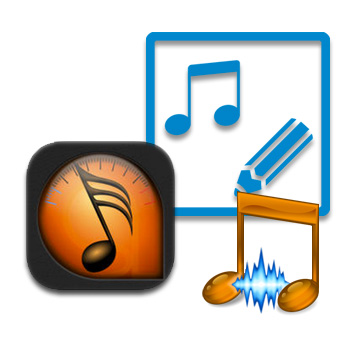However, many music students assume this must mean perfectly writing down every note in traditional notation, which makes transcription an intimidating and overwhelming subject!
Transcription does not have to be hard.
How Transcribing Helps You
Outside of the music conservatory and exam hall, the purpose of transcription is simply to help you as a musician.
This could be:
- To remember a piece you’re writing
- To check you’re hearing what you think you are in a song
- To share musical ideas with other musicians, like sharing your new song with your band
- To practice expressing your music through writing and explore how it relates to your instrument and musical imagination
So transcription should always be considered a tool for you to use – not a challenge for you to fear or avoid!
Often transcription and “melodic dictation” (writing down the notes of a tune) are grouped in with music theory and ear training as tasks which music students struggle with, fear, and ultimately avoid. But (like music theory and ear training) if approached in the right way, they are powerful tools for building musicianship, and needn’t be a struggle at all.
Music Transcription Tips
The most helpful transcription tip is to choose the kind of notation that’s suitable to the task.
The best rock transcribers will listen repeatedly to the same passage of music and painstakingly transcribe each and every note played in minute detail. This produces a score or tablature perfect for somebody who wants to accurately reproduce the original song, for example in a covers band.
However, such detailed notation often does more harm than good – it can be hard to see the forest for the trees when there are so many notes on the page, and if your goal with transcription is to capture a simple musical idea, or quickly jot down something to help you play it by ear, such a detailed approach to transcription is not appropriate.
For example:
- If you’re trying to write down the melody you’ve just made up and have been singing all day so that you won’t forget it, a simple sequence of notes on a staff to help you remember the pitches is good enough. Or you might choose to enter the notes with the virtual keyboard in a program like GarageBand to capture the pitches in “piano roll” notation.
- Or suppose you’re using transcription as a tool to help you figure out how to play a song by ear. Rather than trying to remember the full sequence of chords you’ve been working out, you can write them down with the basic chord symbols (e.g. C, Am, F). There’s no need for note-perfect transcription or classical score notation here.
- You might even find it useful to create your own ways to write down musical ideas. This is particularly true if you’re arranging music or using electronic instruments, where you might want to capture the timbre or overall feel of the sounds rather than simple pitch and duration.
Choose a style of notation and level of detail which match your task, and transcription becomes an easy-to-use tool to help you in music.
Transcription Software
You can greatly accelerate your learning process when it comes to transcription by using modern software tools to help you tune your ear in. These transcription aids let you slow down and pick apart the music to help you hear the detail much more easily.
We have recommendations of the best software to transcribe music for PC, Mac and iOS.
Similar questions answered on this page:
- What notation should I use to transcribe music?
- How do the best rock transcribers do it?
- What’s the best kind of transcription?







